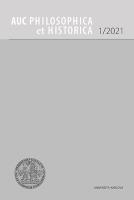„Děti, děti, z toho kouká buď blázinec, nebo vězení!“ Vídeňský akcionismus jako reakce na válečné, osobní i společenské trauma
“Kids, kids, it’s either madhouse or jail!” Viennese Actionism as a response to wartime, personal and social trauma
Author(s): Tomáš KubartSubject(s): Social Sciences, Fine Arts / Performing Arts, Psychology, Clinical psychology, Psychoanalysis, Sociology of Art
Published by: Univerzita Karlova v Praze, Nakladatelství Karolinum
Keywords: Viennese Actionism; posttraumatic stress disorder; PTSD; Wiederholungstrauma; neurosis; psychoanalysis and art; collective trauma; performativity; cultural naratives; war victim; Schweinvokabular; Tot
Summary/Abstract: A group of “Viennese Actionists” was formed in Austria around 1961, ceasing to be active in 1970. One decade of their collaboration comprised creation of a series of multimedia artistic works, often in the form of provocative actions using the so-called Schweinvocabular (“nasty vocabulary”): fake violence, vulgarity, explicit sexuality, profaning state and church symbols, etc. The aim of such aesthetics was not a dull provocation; it was rather an artistic means by which the first generation of post-war artists, who personally experienced the horrors of World War II and the reverberations of the first, responded to the lack of denazification and the internal conflicts in the Austrian society. The paper will present the thesis that the designation of the group as “Viennese Actionism” is probably not derived from the noun “action”, but it is a reference to the current in behavioral psychology called sensomotoric actionism, which originated in the early 20th century and emphasized physical and performative coping with the trauma the Actionists experienced in young age (pain, suffering, loss of loved ones, mass scale of murders, etc.); sensomotoric actionism as a metaphor of artistic response to social trauma. One of the main impulses for the Actionists was thus the war trauma, both on an individual and socio-cultural level. The aesthetic means they employed were based on the actual contemporary methods of treating trauma. Using repulsive “images” that presented the horrors of war, the Actionists “forced” their audience to confront them and, if possible, go through social catharsis, giving back to the theater its ritual function it had in the society of the Classical Athenian polis.
Journal: Acta Universitatis Carolinae Philosophica et Historica
- Issue Year: XXVII/2021
- Issue No: 1
- Page Range: 231-249
- Page Count: 19
- Language: Czech

